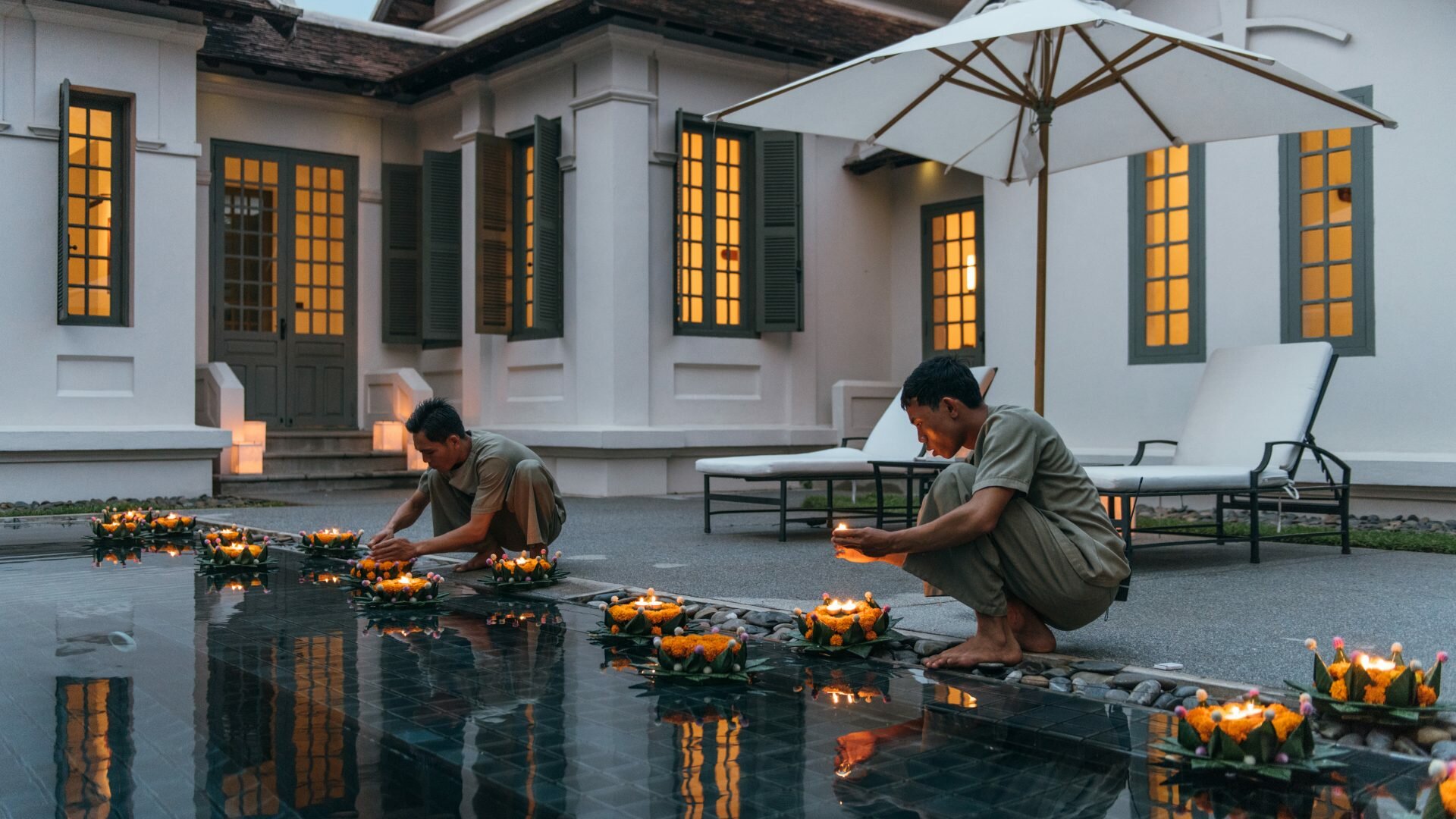In Buddhism, there is a religious season much like the Christian time of Lent, where monks and lay Buddhists alike try to give up indulgences — think meat, alcohol, smoking — and engage in more intensive meditation. That season is about to come to an end soon, and is usually celebrated with what’s commonly known as the Light Festival, where small ‘fireboats’ are decorated and floated down the nearest river. These small boats are believed to take away any bad luck and bring good luck, and also symbolises getting rid of negative feelings. Its a poignant festival, as spiritual as it is dreamy, and is often open to both monks and laity alike.
This October, the Amantaka invites guests to celebrate one of Laos’ most lively and sacred festivals in a respectful manner.
The festivities begin on Sunday, October 13, where monks and novices leave their temples to receive alms from the local townsfolk. Its their way of maintaining contact with the community, since they also take the opportunity to give sermons and precepts to those they meet. Often, these monasteries are home to a large number of novices — mostly boys from impoverished villages, whose studies at Buddhist schools are supported by the town’s population.
For townsfolk to bring food and robes to them, especially on this day, is an essential part of the day’s festivities. Guests at the Amantaka can opt to offer food and robes to their chosen monastic community. Hosts at the property can suggest a temple that’s farther away from the usual tourist paths, and will help conduct the ceremony in a way that’s correct and respectful.
After that, you can take a stroll to nearby temples to witness the monks bless the huge, intricate bamboo lanterns ahead of the actual ceremony. Star and dragon shapes are the most common, but you can always create your own fireboat back at the Amantaka. The smaller boats are often made of banana tree trunks and decorated with flowers and candles, while the larger, more detailed ones are made with a variety of materials.
Since they will only be launched on the evening of the next day, be sure to take the time for a leisurely stroll down the riverside to admire the bevy of lanterns and boats on display.
The evening of October 14 is when the Lai Heua Fai festival — the festival of the fire boat kicks into full swing. Entire families, villages, temples and schools will release their own painstakingly constructed fire boats for the parade, and it is estimated that over 20,000 boats of all shapes and sizes float slowly down the Mekong River each year.
Take part in the ceremony by launching your own fireboat or lantern, and gather with townspeople as they stand by the river banks to pay respects to the goddess of water and ask for good fortune in the years to come.

The Amantaka, which lies in the center of the formal royal capital, Luang Prabang, provides a serene backdrop for the entirety of the festival. The colonial-era buildings retain much of its French charm while also paying respects to the local culture. The resort recently opened a new Buddhist Learning Centre, designed to educate and immerse guests on the practice and principals of Buddhism.
As part of the new learning centre, a Buddhist Abbot will be on hand to offer daily private teachings as well as lessons on the five principals of good living. A Senior Monk will also be on hand to offer personalised tours of the nearby Wat Siphoutthabath temple, giving guests a glimpse into what life as a monk is really like.
For those who really want to take their spiritual education a notch higher, Aman is also offering a 24-night pilgrimage across some of its most serene Indo-Chinese resorts, led by a master Tibetan monk.


